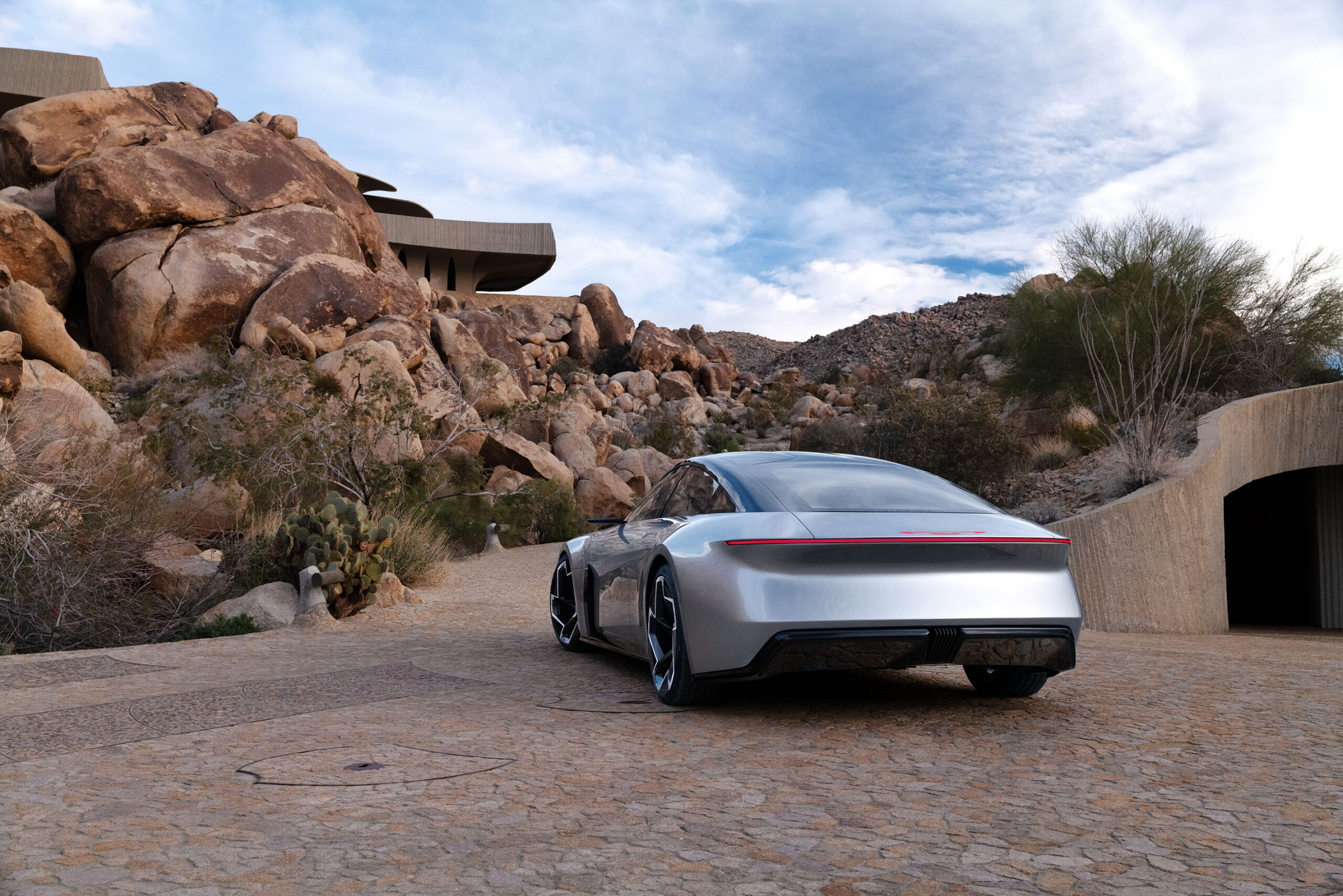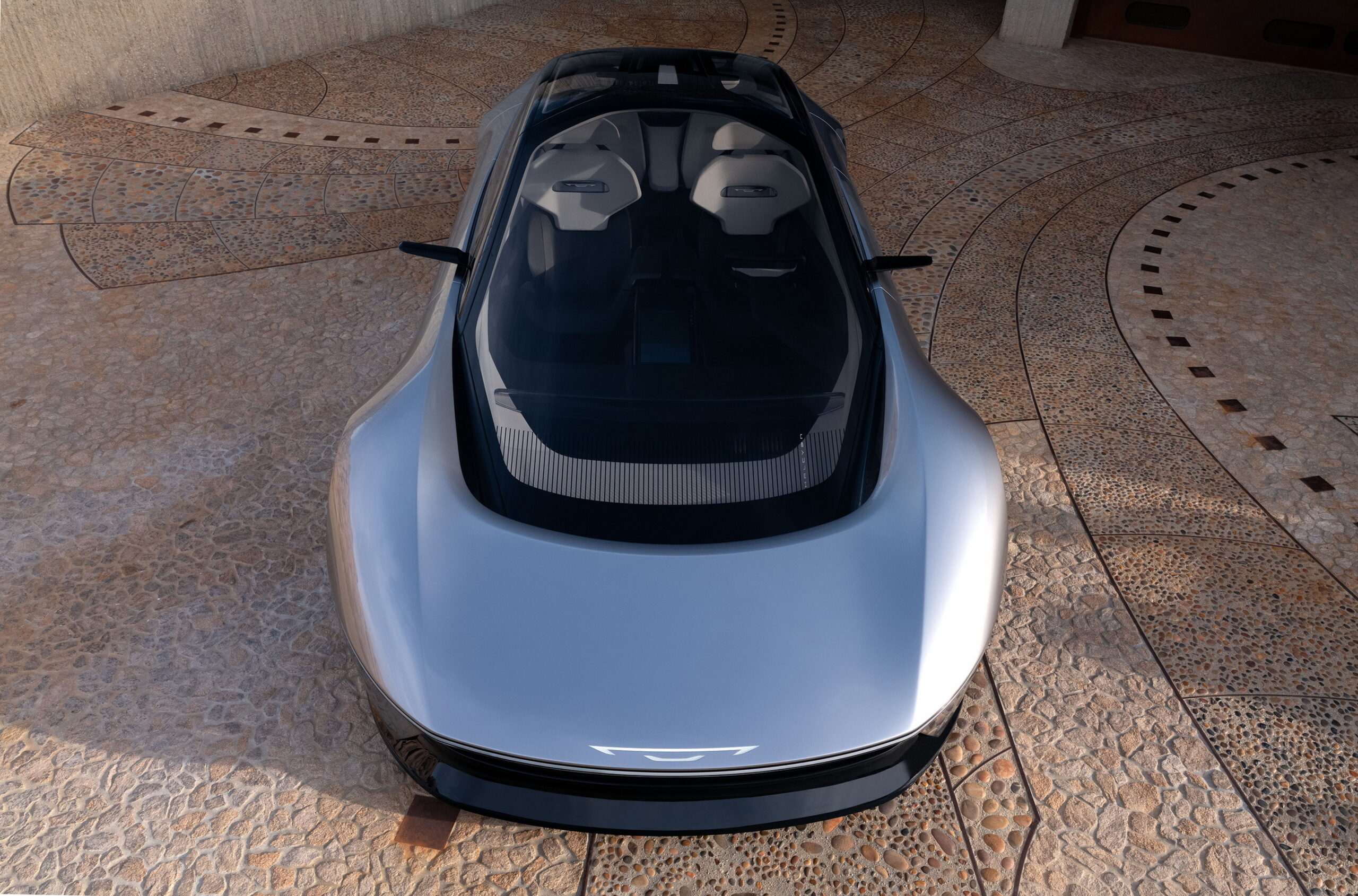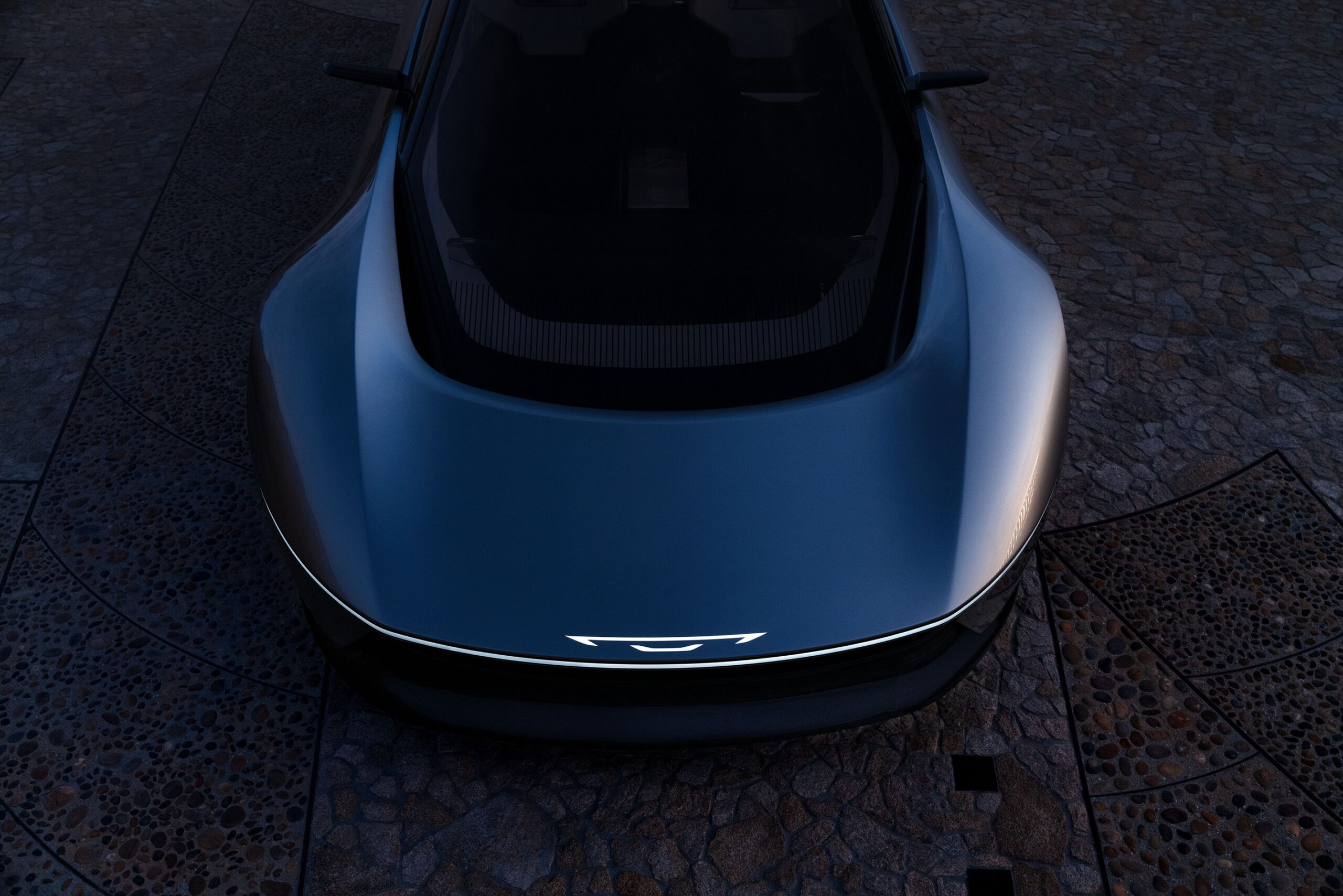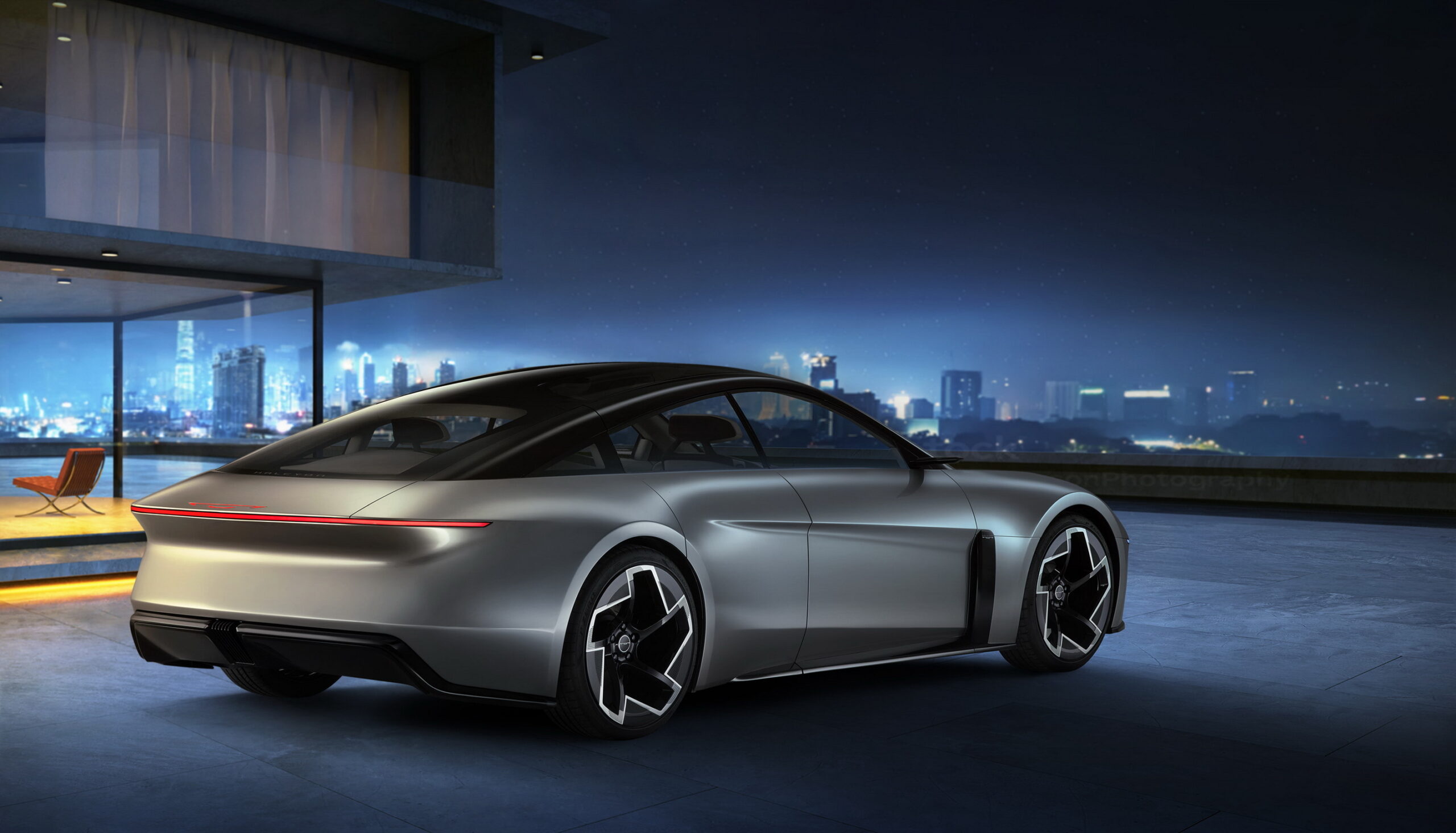Chrysler, parent company Stellantis assures us, is still a thing. It’s been easy to forget that in recent years when all dealers have had to offer was the Pacifica and the 300 sedan that was killed off last December. Though fresh metal is coming, it’s still a year away, so Chrysler’s design team have come up with this, the Halcyon concept, to help us keep the faith.
Looking like the result of the Tesla design team’s attempts to make the 2028 Model 3 resemble an Aston Martin Valhalla, the Halcyon is a four-seat electric sedan with a radically different look to anything we’ve see from Chrysler before, including the 2022 Airflow concept. That was meant to get us excited for the upcoming crossover EV the brand would use to battle the likes of the Hyundai Ioniq 5. Trouble was, it wasn’t exciting at all.
So Chrysler axed the Airflow for something much bolder. The new Halcyon concept is only, well, a concept, and we don’t yet know how closely it resembles the production EV scheduled for 2025. The typically whacky concept design features and the fact that it’s clearly a sedan when we know the first car from Chrysler’s new electric family will be a crossover, tells us it won’t be a case of slapping a license plate on the back and sending it out to dealers.
But if the design language, the supercar-like nose that sits just 4 inches (100 mm) from the ground, the almost racecar-like central canopy and razor-thin front and rear light bars do transfer to the family of EVs that will be rolled out in the second half of the decade, the Chrysler brand will be relevant and desirable in a way it hasn’t been since the 300 was revealed over 20 years ago.
Related: Chrysler’s Existential Crisis Amidst Single-Model Lineup And Electric Dreams
Ralph Gilles and his design team have carried over the odd detail from the earlier Airflow concept, including an illuminated wing logo on the front air blade that allows air to pass beneath it. But as far as we can see, that’s about it. Even if the butterfly doors and flip up roof portions don’t make it to the showroom, the combination of crisp edges and voluptuous curves, the windshield that plunges towards the ground and the deep scallop in the flanks will ensure it catches your attention.
Inside, there are a set of typically showy, and not remotely production-ready, seats and a similarly impractical rectangular steering wheel that appears to have no hub. The view ahead past the low scuttle is dominated by two peaked fenders, a view you might expect to see on a sports car, while a glance to the center console reveals a large portrait touchscreen. Chrysler says 95 percent of the interior is made up of sustainable materials, and in a nod to one of ‘old’ Chrysler’s most famous features, Stow ’n Go seating introduced on the 2004 minivans, the rear chairs can fold into the trunk.
But no 20-year old Voyager came with a combination of biometric identification and AI tech allows the car to recognize and greet each registered driver with an LED welcome and personalized sound effects, then prepare the seating and comfort just how they like them. And it didn’t promise Level 4 autonomous driving, giving you the chance to gaze at a fake starscape on the glass canopy roof, or offer wireless charging for a battery pack that’s claimed to deliver a 60 per cent smaller carbon footprint than today’s batteries.
But will the Halycon make production? We know that Chrysler’s plan calls for an entire family of electric cars to be ready by 2028, three years after the launch of the company’s first EV. Presuming that the debut car is a two-row crossover, and that one of the others is a three-row SUV, then it makes sense that a third option would take the form of a sporty sedan like this.
Related: Stellantis To Launch 8 New Models On STLA Large EV Platform That Supports ICE
Chrysler doesn’t give away much about what’s going on under the Halcyon’s skin, but it does confirm it’s built around the Stellantis STLA Large EV platform, and we already know a little about that architecture. We know, for instance, that it’s designed for cars that are between 187.6-201.8 inches (4,764-5,126 mm) long and have a wheelbase between 113.0-121.1 inches (2,870-3,075 mm). The Tesla Model 3, for reference, is 184.8 inches long (4,695 mm) and measures 113.2 inches (2,875 mm) between the wheels.
We also know that STLA Large supports both 400- and 800-volt charging tech, can offer battery packs between 85 and 118 kWh, and in its ultimate configuration is capable of sending an EV to 62 mph (96 km/h) in the 2-second range. An electric driving range of 500 miles (800 km) for sedans is promised and the platform can adapt to front-, rear- and all-wheel drive configurations. Of note, it can also handle hybrid applications, something Chrysler’s team might need to make use of if EV sales continue to stall and hybrid demand continues to rise.
What do you think of the Halcyon and its new design language? Was Chrysler right to scrap the Airflow and go back to the drawing board? Leave a comment and let us know.




















































































